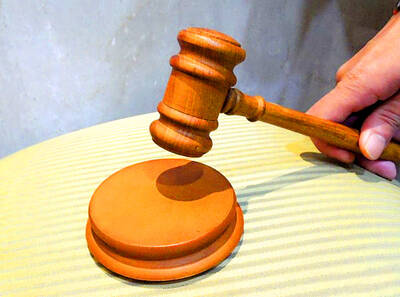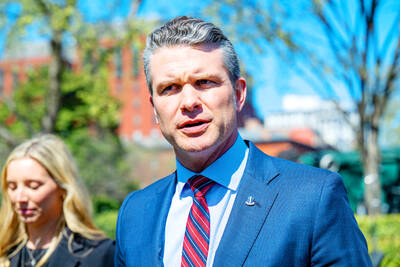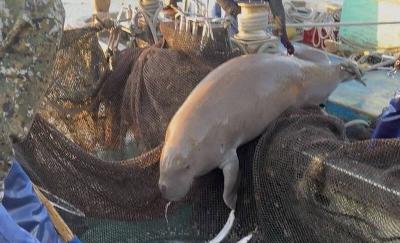Military honor guards resumed their duties and performances at the mausoleums of dictator Chiang Kai-shek (蔣介石) and former president Chiang Ching-kuo (蔣經國) in Taoyuan County on Sunday.
“After requests were made by lawmakers and the Taoyuan County Government to the Ministry of National Defense, we were recommissioned for this assignment on June 16 and officially resumed our performances on June 22,” a press release from the Joint Forces Honor Guard (JFHG) read.
The JFHG said there are 32 members in the new joint honor guards, made up of service personnel from the Air Force, Army and Navy.
In the past, the three forces would take turns, rotating every three months, to guard and perform at the two mausoleums and the performances could be seen between 9am and 4pm each day.
But starting yesterday, the new honor guard squad at the two mausoleums would be composed of guards from three different forces and would perform every hour but only at weekends and on national holidays and always at the same time — between 9am to 4pm.
After the ministry closed the two mausoleums in January, it also terminated the military guard services and performances at the mausoleums.
Taoyuan County Government complained that it had lost at least NT$300 million (US$10 million) in potential tourism revenues since the two mausoleums were closed after the honor guards were withdrawn.

The High Prosecutors’ Office yesterday withdrew an appeal against the acquittal of a former bank manager 22 years after his death, marking Taiwan’s first instance of prosecutors rendering posthumous justice to a wrongfully convicted defendant. Chu Ching-en (諸慶恩) — formerly a manager at the Taipei branch of BNP Paribas — was in 1999 accused by Weng Mao-chung (翁茂鍾), then-president of Chia Her Industrial Co, of forging a request for a fixed deposit of US$10 million by I-Hwa Industrial Co, a subsidiary of Chia Her, which was used as collateral. Chu was ruled not guilty in the first trial, but was found guilty

DEADLOCK: As the commission is unable to forum a quorum to review license renewal applications, the channel operators are not at fault and can air past their license date The National Communications Commission (NCC) yesterday said that the Public Television Service (PTS) and 36 other television and radio broadcasters could continue airing, despite the commission’s inability to meet a quorum to review their license renewal applications. The licenses of PTS and the other channels are set to expire between this month and June. The National Communications Commission Organization Act (國家通訊傳播委員會組織法) stipulates that the commission must meet the mandated quorum of four to hold a valid meeting. The seven-member commission currently has only three commissioners. “We have informed the channel operators of the progress we have made in reviewing their license renewal applications, and

‘DENIAL DEFENSE’: The US would increase its military presence with uncrewed ships, and submarines, while boosting defense in the Indo-Pacific, a Pete Hegseth memo said The US is reorienting its military strategy to focus primarily on deterring a potential Chinese invasion of Taiwan, a memo signed by US Secretary of Defense Pete Hegseth showed. The memo also called on Taiwan to increase its defense spending. The document, known as the “Interim National Defense Strategic Guidance,” was distributed this month and detailed the national defense plans of US President Donald Trump’s administration, an article in the Washington Post said on Saturday. It outlines how the US can prepare for a potential war with China and defend itself from threats in the “near abroad,” including Greenland and the Panama

A wild live dugong was found in Taiwan for the first time in 88 years, after it was accidentally caught by a fisher’s net on Tuesday in Yilan County’s Fenniaolin (粉鳥林). This is the first sighting of the species in Taiwan since 1937, having already been considered “extinct” in the country and considered as “vulnerable” by the International Union for Conservation of Nature. A fisher surnamed Chen (陳) went to Fenniaolin to collect the fish in his netting, but instead caught a 3m long, 500kg dugong. The fisher released the animal back into the wild, not realizing it was an endangered species at